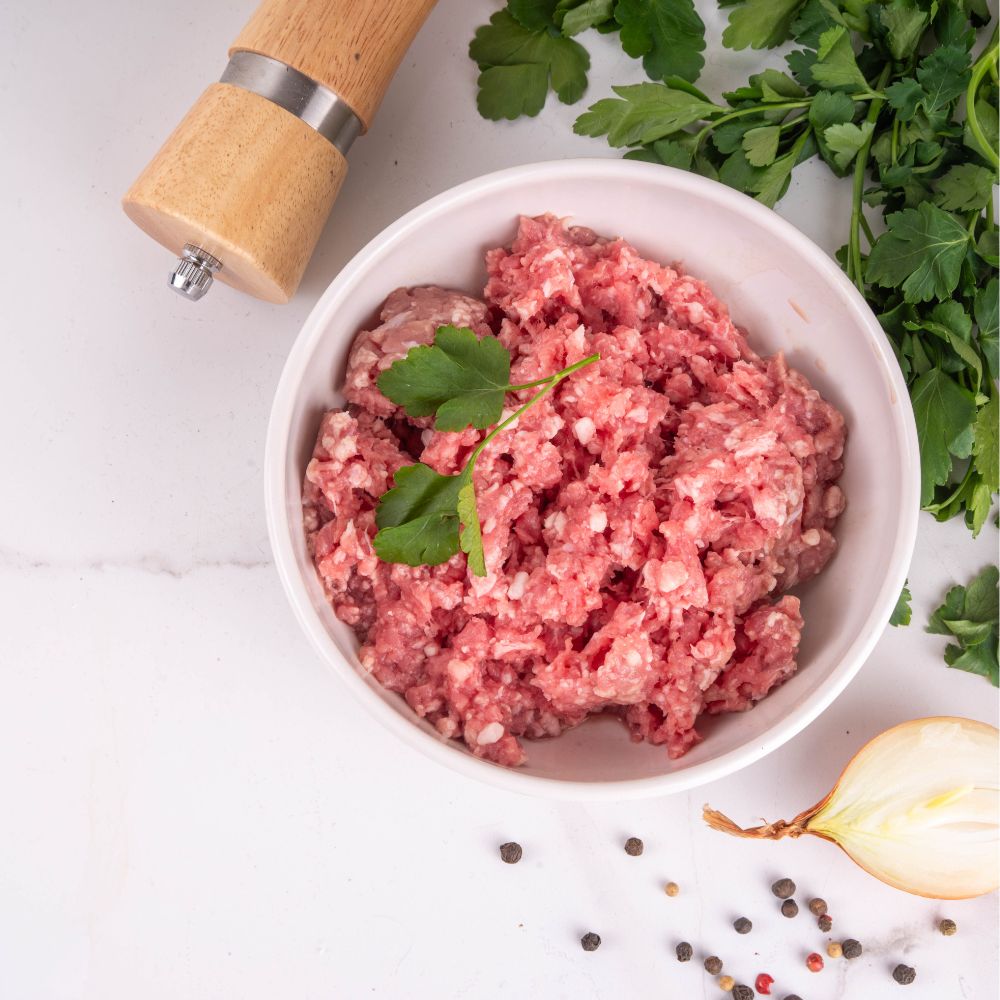Ragout Fin Gratinated In The Microwave
The history of Ragout Fin or Ragufeng, as it is called in East Germany, possibly began around 1685 in Prussia. During the Thirty Years' War, about 6,000 Huguenots lived in Berlin, most of whom were engaged in food production. They invented the dish from finely diced veal. However, this is an unsubstantiated assumption. The French origin is also quite likely given the name. In France, the small ragout was more likely created as a way to use leftovers rather than as a delicacy. But regardless of where the Ragout Fin actually comes from, today we simply like it gratinated.
Over the years, the original recipe has changed. Instead of veal cubes, Ragout Fin is often prepared with diced chicken breast. The offal and anchovies previously used are no longer found in the appetizer sauce. Ragout Fin has always been gratinated, of course, in a conventional oven before the microwave was invented. After the meat is placed in ramekins filled with the thick, white sauce deglazed with white wine and a splash of lemon, a little breadcrumbs, a thin piece of butter, and, depending on the region, some grated cheese are placed on top.
Gratinating In The Microwave – Different Methods
Traditionally, the filled ramekins are now gratinated in a preheated oven. Here, the cheese-butter layer becomes particularly crispy when the oven is set to 180 °C top and bottom heat with a grill function. After 20 minutes, the ragout is hot and the cheese is melted. Instead of in the oven, Ragout Fin can also be gratinated in the microwave. It's good if the microwave has a grill function. Here, you can crisp the cheese brown after the actual cooking time of the Ragout Fin by grilling it.
Gratinating Ragout Fin In A Microwave Without Grill Function
The microwave is set to 800 watts and the ramekins are placed in the appliance for 7 to 8 minutes. Since the ragout is heated from the inside out, the dishes must be covered. Simple microwave lids can be used, but they are only partially recommended. A coffee filter is better suited, placed on the Ragout Fin. The advantage is that the filter does not get hot and the dish underneath does not sweat. Ragout Fin that is gratinated under a conventional lid in the microwave unfortunately does not develop the popular crispy top layer.
Important: Regardless of the chosen lid, Ragout Fin in the microwave must be covered. If you want to gratinate several dishes at the same time, increase the cooking time by 3 to 5 minutes. Check intermittently to see if the cheese has melted.
Gratinating Ragout Fin In A Microwave With Grill Function
When preparing Ragout Fin in a microwave with a grill, two methods can be chosen. In the first variant, only the grill function is used and the appliance is set to grill at 160 °C. The dishes remain in the microwave for 6 to 7 minutes. When grilling, Ragout Fin is not covered. Especially lovers of crispy browned cheese layers will enjoy this method.
Alternatively, the classic gratinating can be combined with the grill function. Here, the Ragout Fin is cooked for 7 minutes at 800 watts under a lid. Then, the lid is removed, the microwave is set to grill, and the cheese layer is browned for about 2 minutes (or to the desired degree of browning).
Ragout Fin As In The GDR
Veal was scarce in the former East Germany. Nevertheless, Ragout Fin is a typical GDR dish, which was enjoyed in restaurants as an appetizer or served over schnitzel. In the former GDR, Ragout Fin was exclusively made from chicken and gratinated with a layer of cheese. Capers were added if desired. A more luxurious version was Ragout Fin with mushrooms, which was rarely found in restaurants.
If you want to gratinate an original Ragout Fin that recalls childhood memories in the microwave, finely diced chicken is a must. If you want to serve a fine ragout based on the original Huguenot recipe, add diced veal. The cooking times are the same, so you can choose according to personal preference and taste.
Tip: Worcestershire sauce is a must for any Ragout Fin dish. It is not added to the ragout sauce and cooked, but drizzled in small quantities over the gratinated cheese layer before eating. If the cheese is crispy and not too liquid, the sauce stays on the surface of the dish until the cheese is consumed.





Leave a comment
This site is protected by hCaptcha and the hCaptcha Privacy Policy and Terms of Service apply.